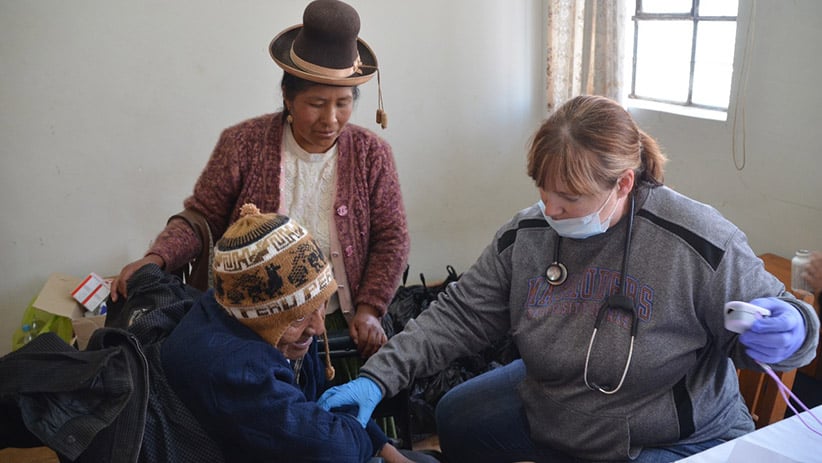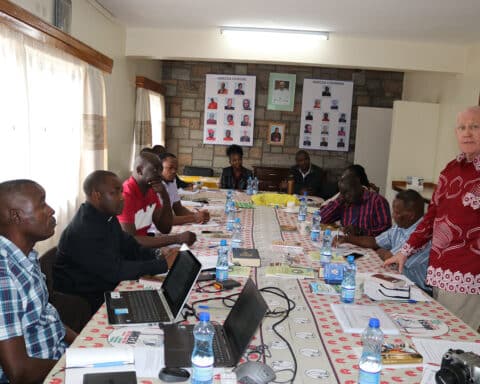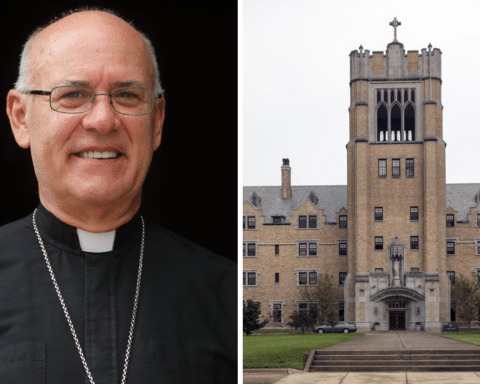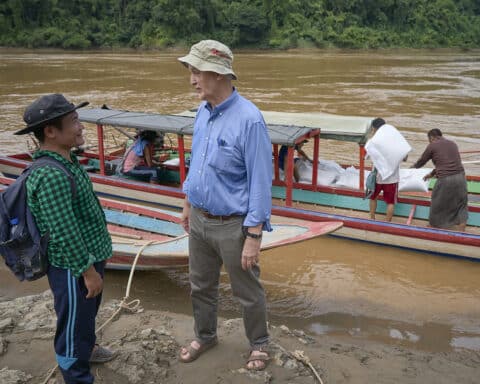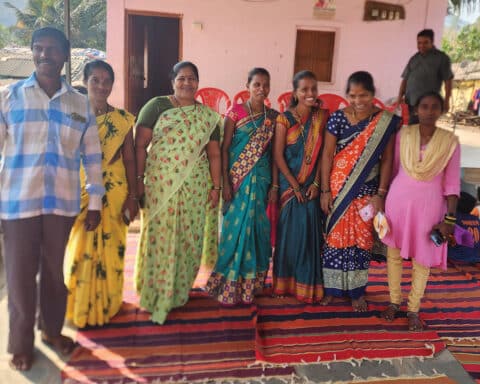Mission work has long been a draw for students on spring break, but STEM programs at small Catholic colleges in the United States are really starting to add their skills into the mix.
Whether that’s a group of engineering students or a band of health care professionals, students from schools like Benedictine College in Atchison, Kansas, or the University of Mary in Bismarck, North Dakota, are using their technical expertise to make a difference.
Engineering with purpose
Kienan McIntee, a senior mechanical engineering major at Benedictine, credits his teen years for inspiring the passion he now has for planning trips as leader of the school’s Engineering Mission Team.
“My family’s always been mission-oriented,” he said. “And with the engineering mission trip, that kind of came naturally. It combined two things I love to do, the STEM field and missionary work.”
The program runs under faculty point person Scott Newbolds, Ph.D., an associate professor of engineering at Benedictine for last six years. But he doesn’t take any credit for the program’s success — it was the students themselves who approached him for the role four years ago.
“The students came up with the idea and got the ball rolling,” he said. “It’s been a great opportunity for me to be involved. They are always an inspiration.”
The four annual trips have taken the crews to Guatemala to engineer a roof system, Ghana to install a water storage facility, Peru to build greenhouses for year-round fresh produce, and Nicaragua to survey land for a building project.
“The students are able to use their knowledge, talents and their schoolwork,” Newbolds told Our Sunday Visitor. “They can adapt that in a practical way, and also in a manner that helps to serve others.”
Catholic identity
Many schools dotting the U.S. have “engineer-without-borders”-type programs. But Newbolds says what makes Benedictine unique is “the tie-in to the missionary Catholicism, and being able to have more of a human-centered and Christ-centered approach, to be able to see the dignity of the people we’re working for.”
The trip that sticks most in Newbolds’ mind is the mission that took them to a small, underdeveloped Ghanaian village. There’s no running water, and the community has only recently received electricity.
But he said that the way the locals welcomed the visitors into their homes was unbelievable.
“They were giving us gifts for coming, things that they have, which wasn’t much, but they wanted to share it with us,” he said. “That kind of experience is something that touched us all.”
As these trips approach, it’s up to student leaders like McIntee to recruit volunteers, contact organizations for sponsorships, schedule and buy flights, as well as brainstorm with professors with what sort of projects are realistic to complete during the approximate 10 day trips.
McIntee reflected that there is a lot of debate about whether it’s worth paying so much money for short-term mission trips versus just giving the money needed outright.
“But if there’s any kind of change of heart, any kind of change in somebody’s standard of living, it’s worth it,” he said. “Engineering-wise, you can get a project that can not only change one person, but a whole community’s lives, like cleaner water or fresher vegetables, for years to come.”
Medical missions
Kemerly Meland, the director for the office of global studies at the University of Mary for the last eight years, understands the reality of changing lives for the better in remote areas, especially in a section of the Peruvian Andes.
Born in Peru herself, Meland helps run the “Medical and Service Mission Trip,” which is also in its fourth year and is one of the biggest at the university. She is thrilled that the students attending the North Dakota school are accompanying her back to her home country to deliver medical aid.
The area is one of the poorest of the poor, even for Peru, says Meland. It takes two days to get to the site, including a day to adjust to the high altitude of 13,000 meters above sea level before a six-hour bus drive.
“I’m amazed at the University of Mary students, because we live in North Dakota where it’s so flat, and going there is a challenge,” she laughed. “But they do so great there.”
Physical therapists, occupational therapists and nurse practitioners accompany the students, along with medical director, Dr. Claire Kenamore. The group also brings donations of medicine with them during the May trip. Like McIntee, Meland deals with the logistics needed to pull off the trip, including where they will sleep and eat.
The real, raw world
They set up camp at a school run by Felician sisters. Working closely with the regional diocese, the teams travel to different sites throughout the area, especially rural areas where medical professionals don’t visit or can’t address basic medical needs. They even make home visits for the elderly or wheelchair-bound.
Another mission group that visits at a different time of the year leaves behind a list of patients for them to follow up with while they’re there.
“You truly leave behind your comforts that you have in the U.S. There’s not even hot water. People don’t know what heating is,” said Meland. “Nobody complains about anything. The students truly know what they’re getting into. They want to go and serve.”
McIntee says it is interesting for him how missionaries will make comments toward the end of the trip about “getting back to the real world,” e.g., back to the U.S.
But McIntee doesn’t agree with that assessment of the situation.
“I think the real world is mission work, the real world is working with people side-by-side who are completely different than you, to better their lives and your life,” he told OSV.
“That community will help you with your faith by showing you that the poverty of the earth is not necessarily a spiritual poverty. More often than not, they are very rich in their spiritual life. It’s an exchange of richness, of the earth and the soul.”
Mariann Hughes writes from Florida.

